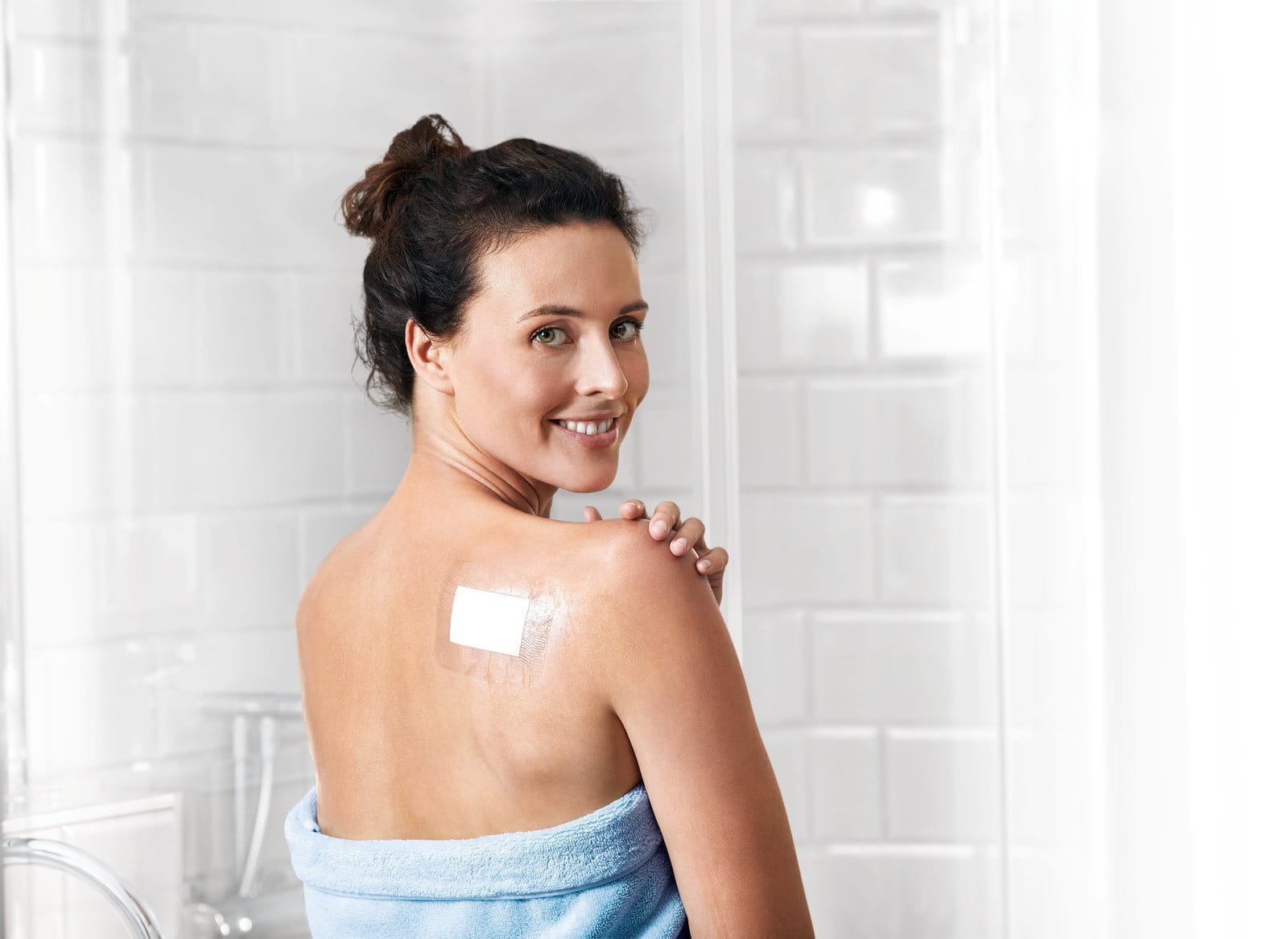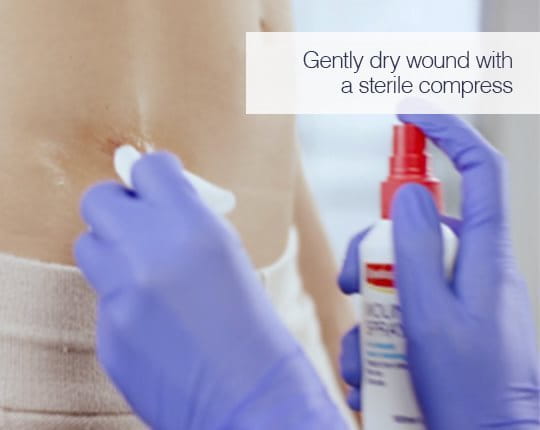Post-operative wounds

Post-operative wounds, also called surgical wounds, occur after an incision performed by medical professionals in a targeted and precise manner under sterile conditions
They are characterized by regular sharp, clean wound edges and often closed with sutures, glue or staples.
In these cases, so-called dry wound care is recommended i.e. covering the wound with a dressing without providing moist wound healing conditions.
An appropriate dressing for post-op wounds should therefore be sterile, provide a good barrier, absorb fluid or exudate and keep the wound dry and be adherent to the skin but atraumatic on removal and not stick to the wound.
The dressing and wound pad size should always be chosen with the wound size to ensure that the wound area is completely and safely covered by the wound pad. As an alternative, a sterile compress can be used combined with unsterile fixation e.g. fixation tape, wide are fixation or cohesive bandage – depending on wound location and individual preferences.
In these cases, so-called dry wound care is recommended i.e. covering the wound with a dressing without providing moist wound healing conditions.
An appropriate dressing for post-op wounds should therefore be sterile, provide a good barrier, absorb fluid or exudate and keep the wound dry and be adherent to the skin but atraumatic on removal and not stick to the wound.
The dressing and wound pad size should always be chosen with the wound size to ensure that the wound area is completely and safely covered by the wound pad. As an alternative, a sterile compress can be used combined with unsterile fixation e.g. fixation tape, wide are fixation or cohesive bandage – depending on wound location and individual preferences.
Why is proper wound care important?
It is important to ensure proper wound care for post-operative wounds
To do so, different aspects have to be taken into consideration:
Before the operation, pre-operative, the patient has to be prepared individually according to the type of surgery and risk of the patient.
During the operation, intra-operative, compliance with all hygiene regulations during the surgery (structural requirements, clothing, processes) has to be ensured.
After surgery, post-operative, the first wound dressing will be applied in the operation theatre and the surgeon will decide further wound treatment and dressing changes. Usually, sterile wound dressings should be used. The patient should be trained e.g. on basic hygiene rules, the dressing change should happen under antiseptic/hygienic conditions (non-touch technique, protect from water) and the wound should be observed regularly to detect complications early.
The latter is the one the patient himself can impact.
Before the operation, pre-operative, the patient has to be prepared individually according to the type of surgery and risk of the patient.
During the operation, intra-operative, compliance with all hygiene regulations during the surgery (structural requirements, clothing, processes) has to be ensured.
After surgery, post-operative, the first wound dressing will be applied in the operation theatre and the surgeon will decide further wound treatment and dressing changes. Usually, sterile wound dressings should be used. The patient should be trained e.g. on basic hygiene rules, the dressing change should happen under antiseptic/hygienic conditions (non-touch technique, protect from water) and the wound should be observed regularly to detect complications early.
The latter is the one the patient himself can impact.

How to treat your wound properly?
Post-operative wound care is always related to the individual wound situation and the treatment should be performed as per the doctor's recommendation.
After the primary wound closure by the surgeon, the wound is generally protected with a sterile dressing. Approximately after 2 days* the dressing is changed for the first time and the wound is observed by the doctor.
Afterwards, the dressing should be changed daily (individually after consultation with the doctor). This can be done at home by the patient.
Always make sure to use sterile wound dressings, follow basic hygiene rules, change the dressing under antiseptic/hygienic conditions (non-touch technique, protect from water) and observe the wound regularly to detect complications early.
In general, after 6-12 days* after surgery, the sutures, staples or drains are removed by the doctor.
*individually different, decision by the attending physician.
After the primary wound closure by the surgeon, the wound is generally protected with a sterile dressing. Approximately after 2 days* the dressing is changed for the first time and the wound is observed by the doctor.
Afterwards, the dressing should be changed daily (individually after consultation with the doctor). This can be done at home by the patient.
Always make sure to use sterile wound dressings, follow basic hygiene rules, change the dressing under antiseptic/hygienic conditions (non-touch technique, protect from water) and observe the wound regularly to detect complications early.
In general, after 6-12 days* after surgery, the sutures, staples or drains are removed by the doctor.
*individually different, decision by the attending physician.
Sterile conditions
Usually, sterile conditions are not given at home but they are also not required for wounds without complications. Nevertheless, post-operative wounds should be treated with sterile dressings to reduce the risk of wound infections. It is important to apply the dressing hygienically: Wash your hands before treatment, wear gloves and don’t touch the wound pad while opening or applying the dressing (non-touch technique).





.jpg?rx=0&ry=0&rw=540&rh=430&hash=34F3DA12D8BB91AF9CFE7AE5CA0396E3)